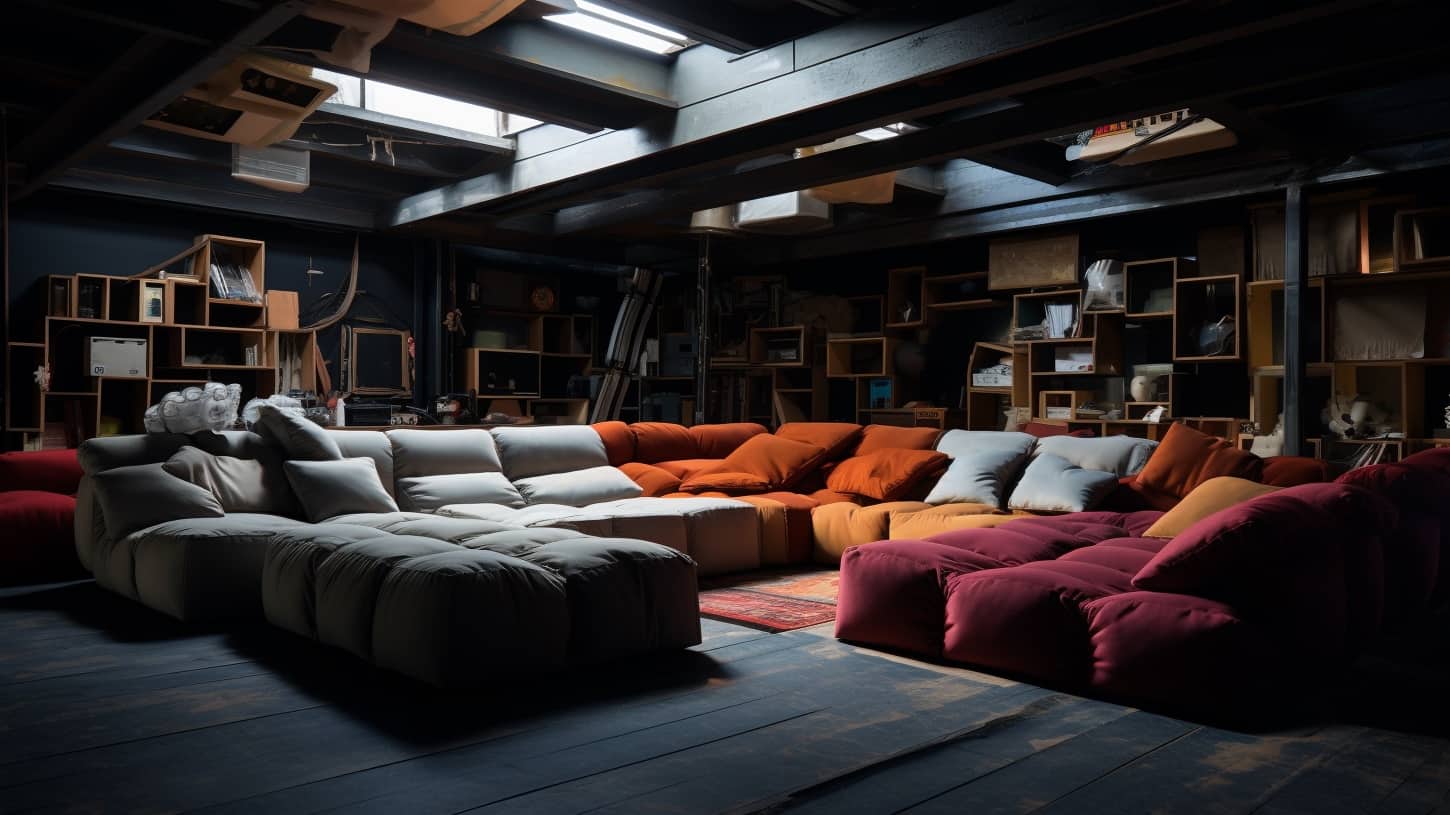
Tariff Shock: How 2025’s Import Duties Are Changing the Way You Shop for Sofas
In the market for a new sofa this year? You might want to sit down for this news—preferably on furniture you already own. The 2025 tariff increases are dramatically reshaping the furniture landscape, affecting everything from prices and availability to quality and shopping strategies. As the owner of lesofa.club, I’ve been closely monitoring these developments to help our readers make informed decisions during these uncertain times.

The New Tariff Reality: What’s Actually Happening?
The furniture industry has been hit with a perfect storm of tariffs in 2025. The current administration has implemented what they call “reciprocal tariffs” on imports from countries that charge high duties on American goods. For furniture shoppers, this translates to significant price increases on sofas and other seating options.
Here’s what the new tariff landscape looks like for major furniture-exporting countries:
– China: A staggering 54% effective rate (34% new tariff plus existing 20% from February)
– Vietnam: 46% (previously a popular alternative to Chinese manufacturing)
– Cambodia: 49%
– European Union: 20%
– Canada and Mexico: 25%
Additionally, there’s now a universal 10% base tariff on virtually all imports, regardless of origin.
These aren’t just abstract numbers—they’re directly affecting the price tag on that sectional sofa you’ve been eyeing.
From Factory to Living Room: How Tariffs Inflate Your Sofa’s Price
When you see a sofa’s price has jumped by 30% or more since last year, here’s what’s happening behind the scenes:
1. Manufacturers face higher material costs – Even before a sofa is assembled, the 25% tariff on steel and aluminum drives up the cost of frames and springs.
2. Import duties compound at every stage – From raw materials to finished products, tariffs accumulate throughout the supply chain.
3. Retailers adjust margins – To stay profitable, stores must either raise prices or reduce quality—often both.
According to industry data, the average price increases from 2024 to 2025 tell a sobering story:
– Modular sofas: Up 35.6% (from $1,250 to $1,695)
– L-shaped sectionals: Up 35.9% (from $1,750 to $2,379)
The Yale Budget Lab estimates these tariff-induced price hikes are costing American households an additional $3,800 annually across all consumer goods, with furniture representing a significant portion of that increase.
Beyond Price Tags: How Tariffs Are Affecting Sofa Availability
It’s not just about paying more—it’s also about having fewer options and waiting longer for them:
Shrinking Selection
Many retailers are streamlining their inventory to focus on best-selling models, meaning that unique or specialized sofa styles are becoming harder to find. The days of endless customization options may be temporarily on hold as companies navigate the new cost landscape.
Extended Wait Times
Remember when you could order a custom sofa and have it delivered in 4-6 weeks? Those days are gone for now. Industry reports indicate lead times have stretched to 8-12 weeks or longer as supply chains adjust to new manufacturing locations and logistics challenges.
Quality Concerns
Perhaps most concerning for consumers is the trend toward “silent downgrades”—manufacturers subtly reducing quality to maintain price points. This might mean thinner cushioning, lower-grade fabrics, or less durable frame construction. What looks like the same sofa as last year might actually be a compromised version.
Smart Sofa Shopping Strategies for 2025
Despite these challenges, you don’t have to put your living room refresh on indefinite hold. Here are practical strategies for navigating sofa shopping in the current tariff environment:
1. Consider Timing Strategically
Major sales events like Memorial Day, Labor Day, and Black Friday still represent opportunities for savings, as retailers may absorb some tariff costs to drive volume. If your purchase isn’t urgent, planning around these events can yield significant savings.
2. Reassess American-Made Options
With import prices soaring, the price gap between imported and domestically produced sofas has narrowed considerably. American-made furniture that once seemed out of reach may now be competitively priced while offering better quality and shorter lead times.
3. Explore Modular Solutions
Modular sofas allow you to build your seating arrangement piece by piece over time, spreading the cost across multiple purchases. This approach not only eases the financial burden but also provides flexibility as your needs change.
4. Investigate Material Alternatives
While leather prices have been particularly affected by tariffs, performance fabrics and innovative synthetic materials may offer durability at a lower price point. Being open to alternative materials can lead to unexpected savings.
5. Consider the Secondary Market
The value proposition of high-quality used furniture has never been stronger. Vintage and second-hand sofas—particularly well-made pieces from established brands—can provide exceptional value in the current market.
Industry Adaptations: How Furniture Companies Are Responding
The furniture industry isn’t standing still in the face of these challenges. Here’s how companies are adapting:
Manufacturing Migration
Many manufacturers are relocating production to countries with lower tariff rates or exploring split production models where components are made in different regions to minimize duties.
Material Innovation
Research and development teams are working overtime to develop alternative materials and construction methods that reduce reliance on heavily tariffed components without compromising quality.
Domestic Expansion
Some forward-thinking companies are investing in U.S. manufacturing capabilities, betting that the tariff situation will make domestic production economically viable for the long term.
Looking Ahead: Will Sofa Prices Ever Come Down?
The million-dollar question (or at least the $2,379 L-shaped sectional question) is whether these price increases are temporary or the new normal. Industry analysts are divided, but most agree on a few key points:
– Short-term relief is unlikely – Even if tariffs were reduced tomorrow, it would take months for prices to adjust downward through the supply chain.
– Production diversification will continue – Furniture companies will likely maintain more geographically diverse manufacturing to hedge against future trade policy changes.
– Consumer expectations will evolve – As with many economic shifts, consumers will eventually adjust to new price benchmarks, though this adjustment period may be painful.
Making the Best of the Current Reality
While we can’t control international trade policy, we can control our approach to furniture shopping. Here are my final recommendations for sofa shoppers in 2025:
1. Do your homework – Research materials, construction methods, and country of origin before shopping.
2. Ask direct questions – Don’t hesitate to inquire about recent changes in materials or construction when comparing current models to previous years.
3. Consider lifetime value – A well-made sofa that lasts 15 years is a better value than a cheaper one that needs replacement after 5, especially in this high-price environment.
4. Be flexible – Your perfect sofa might come from an unexpected source, whether that’s a domestic manufacturer you hadn’t considered or a different style than you initially envisioned.
The current tariff situation presents real challenges for sofa shoppers, but with informed strategies and realistic expectations, you can still create a comfortable, stylish living space without breaking the bank. At lesofa.club, we’ll continue monitoring these trends and providing updates as the furniture landscape evolves.
Have you experienced sticker shock while sofa shopping this year? Share your experiences and strategies in the comments below!



